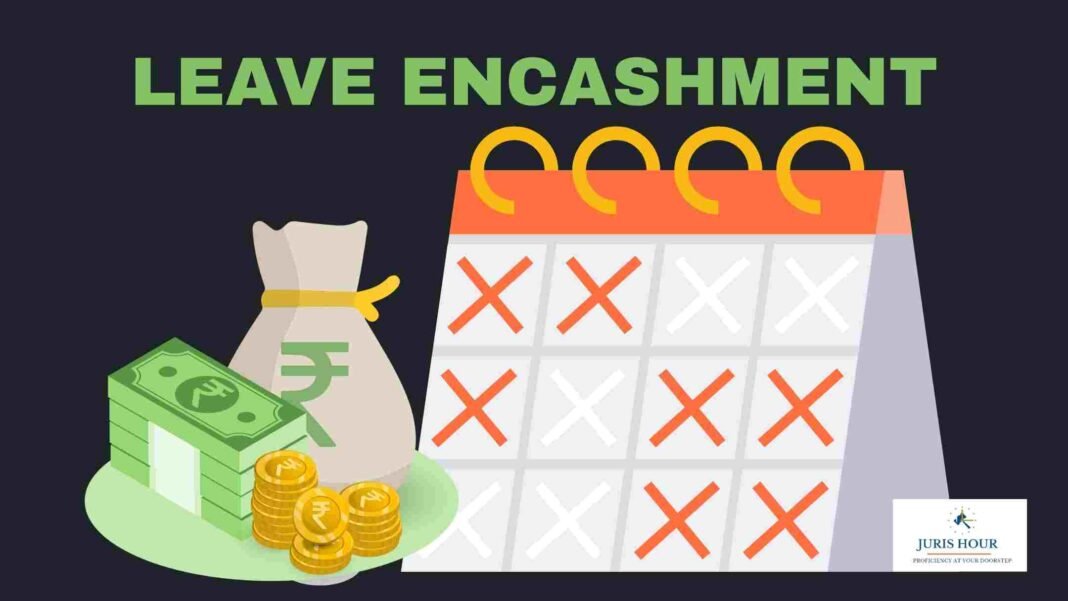Whether leave encashment is tax free in India depends on when you receive it and who you work for. Government employees and legal heirs often get full exemption; non-government employees can get partial exemption at retirement up to certain limits defined in Section 10(10AA) of the Income-tax Act. Leave encashment received while in service is generally fully taxable (though relief may be available under Section 89).
What is “leave encashment”?
Leave encashment (also called leave salary) is the cash payment an employer makes to an employee in lieu of unused paid leave (earned/privilege leave). Employers may pay this during service (e.g., yearly encashment) or upon cessation of service (resignation, retirement, termination), or it may be paid to legal heirs on the employee’s death.
The legal framework (quick look)
Primary provision: Section 10(10AA) of the Income-tax Act deals with exemption of leave encashment. It distinguishes between (i) employees of the Central or State Government and (ii) other employees (private sector).
When encashment is paid during employment: it is treated as part of salary and is fully taxable; you may be able to claim relief under Section 89(1) for arrears/advance salary situations.
Who gets full exemption?
Central Government and State Government employees: leave encashment received at the time of retirement/cessation is fully exempt from tax. The same applies where the legal heirs receive the amount on death.
Who gets partial exemption — private / non-government employees
For non-government employees (private sector, public-limited companies, etc.), the exemption on leave encashment received at retirement/cessation is the least of the following amounts (i.e., exemption = minimum of these):
- Amount specified (statutory ceiling) notified by the Government — currently ₹25,00,000 (this ceiling was increased in recent budgets and is now the cap used for computing exemptions).
- Actual amount of leave encashment received (what your employer actually pays).
- Average monthly salary of last 10 months × 10 (i.e., 10 months’ average salary). “Salary” for this purpose generally includes basic pay + dearness allowance (and commission, if it forms part of pay).
- Cash equivalent of unutilised earned leave at the time of retirement/cessation — computed using the average salary of the last 10 months and taking maximum 30 days’ leave per year of service (so days = min(actual unavailed days, 30 × years of service), converted to months/days and multiplied by average daily salary).
Only the portion above the exempt amount (i.e., actual received minus exempt portion) is taxable as salary.
Worked example (simple)
Suppose:
- Actual leave encashment received at retirement = ₹3,20,000
- Average monthly salary (last 10 months) = ₹30,000 → 10 months’ average = ₹3,00,000
- Cash equivalent of leave (based on average salary & allowed leave days) = ₹3,20,000
- Statutory ceiling = ₹25,00,000
Exempt amount = least of (₹25,00,000; ₹3,20,000; ₹3,00,000; ₹3,20,000) = ₹3,00,000
Taxable portion = ₹3,20,000 − ₹3,00,000 = ₹20,000 (this ₹20,000 is added to salary and taxed at your slab).
Leave encashment received during employment (not at exit)
If your employer encashes leave while you are still in service (for example, annual encashment), that amount is treated as salary and is fully taxable in the year it is received. You can, however, consider claiming relief under Section 89(1) if that income represents arrears, and you must file Form 10E before filing your ITR to claim Section 89 relief. Employers may also deduct TDS on such payments in the normal way.
Death of employee — legal heirs
If the employee dies and legal heirs receive leave encashment, the amount received by legal heirs is exempt (treated similarly to retirement benefits) under Section 10(10AA).
TDS and practicalities
Employers generally deduct TDS on salary including the taxable portion of leave encashment. Where the employer treats the payment as fully taxable, TDS may be applied at applicable slab rates; if part exempt, employer should reduce taxable part for TDS. If excess TDS is deducted, you can claim refund in ITR.
If you receive encashment while in service and it pushes you into a higher tax bracket for that year, Section 89 relief (Form 10E) can reduce the tax by spreading the impact across years (if the encashment relates to previous years).
Recent policy change you should know
The government revised the maximum statutory ceiling used in Section 10(10AA) computations to ₹25,00,000 (replacing an earlier lower cap such as ₹3,00,000 used in past years). That change materially increases the potential tax-free portion for long-service employees. Always check the Finance Act / official notifications for the current ceiling before computing your tax.
Checklist: How to determine taxability of your leave encashment
- When did you receive it? — during employment (taxable) or on retirement/termination (possibly exempt).
- Who is the employer? — Central/State government → full exemption; others → partial exemption per Section 10(10AA).
- Compute the least of: statutory ceiling (₹25L as of recent updates), actual amount, 10 months’ average salary, cash equivalent of unavailed leave (max 30 days/year). The least is exempt; remainder (if any) is taxable.
- If it was paid during service, consider claiming Section 89 relief (file Form 10E before ITR).
Practical tips & traps
- Confirm employer’s calculation: employers sometimes use a different definition of “salary” or different leave caps. Ask for the math (per-day rate, leave days considered).
- Check precedent / policy: company policies may restrict encashment types (earned vs casual vs sick leave). Only privileged/earned leave is typically considered for Section 10(10AA).
- TDS & ITR: if employer deducts excess TDS, claim refund via ITR; retain employer statement and Form 16.
- Plan timing cautiously: encashing while in service usually increases taxable income for that year. If you’re close to retirement, consider waiting (when partial/full exemption may apply). But don’t base decisions only on taxes — cashflow and employer policy matter.
Leave encashment tax exemption form
In India, the form you need for claiming tax relief on leave encashment is Form 10E. This form is filed online through the official Income Tax e-filing portal.
The specific tax rules and forms for leave encashment depend on whether it is received while you are employed or at the time of retirement, as well as whether you are a government or private employee.
For leave encashment received during service
If you encash your leave while still employed, the amount is fully taxable as “income from salary”. However, you can claim tax relief under Section 89 of the Income Tax Act by filing Form 10E online.
For leave encashment received at retirement or resignation
Government employees
For central and state government employees, the entire amount of leave encashment received at retirement is fully exempt from tax. Therefore, no separate tax exemption form is required
Quick FAQ
Q: Is leave encashment at retirement always fully tax-free?
A: Only for Central/State government employees is it fully exempt. Private employees get a partial exemption subject to the “least of” formula under Section 10(10AA).
Q: Is leave encashment paid while I’m employed tax-free?
A: No — amounts received during service are treated as salary and fully taxable (you may claim Section 89 relief if applicable).
Q: What is the current maximum exemption limit?
A: The government-notified ceiling used for computation is Rs. 25,00,000 (check latest Finance Act/notifications to confirm if you read this later).
Read More: Telangana Issues SOP to Rectify Multiple GST Orders for Same Cause of Action

